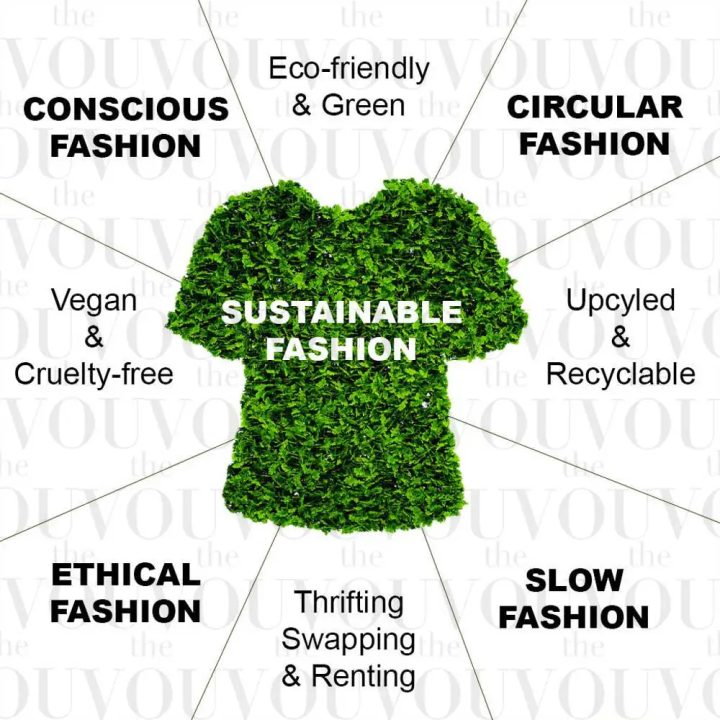Cape Town Sustainable Fashion: Redefining Design with Moral Choices
Cape Town Sustainable Fashion: Redefining Design with Moral Choices
Blog Article
Remain Ahead of the Contour by Exploring Cutting-edge Style Trends
In a market as dynamic as fashion, remaining ahead entails even more than just following existing patterns-- it demands an expedition of technology. The convergence of innovation and fashion advertises a new era of customer involvement.

Welcoming Smart Textiles
Recently, the garment industry has actually witnessed a transformative shift with the assimilation of clever textiles, an advanced innovation that blends innovation with textile. This advancement represents not just a blend of appearances and functionality however additionally a considerable jump in the direction of sustainability and customization in fashion. Smart fabrics, likewise called e-textiles, installed sophisticated electronic devices such as sensing units and conductive threads within the textile, making it possible for garments to communicate with the wearer or the atmosphere.
These textiles are designed to keep an eye on physiological specifications, such as heart price or body temperature level, giving real-time wellness analytics. Beyond wellness applications, smart fabrics are likewise being made use of for flexible garments, which can alter color or pattern in response to ecological stimuli, hence using a dynamic style experience.
Additionally, the development of energy-harvesting textiles that produce power from movement or sunlight is leading the means for self-sufficient wearable technology. This advancement is appealing to environmentally conscious consumers and developers aiming to decrease the eco-friendly footprint of fashion. As research and development in this area development, clever textiles are expected to end up being significantly common, reshaping the landscape of contemporary style with their multifunctional capabilities.
The Increase of 3D Printing
Reinventing the production landscape, 3D printing has become a game-changer in the fashion business. This cutting-edge technology has actually enabled designers to press the limits of imagination, producing elaborate and tailored garments that were previously unthinkable. By leveraging digital layout and additive manufacturing, 3D printing helps with the creation of complex geometries and patterns, permitting designers to trying out new structures and structures.
A notable advantage of 3D printing in vogue is its ability to generate on-demand, minimizing waste and minimizing stock needs. This efficiency not just enhances manufacturing processes however likewise permits for rapid prototyping, allowing developers to bring their visions to life in a shorter timeframe. In addition, 3D printing sustains personalization to a level unequaled by typical techniques, providing one-of-a-kind layouts and personalized fits customized to private customer choices.
The rise of 3D printing has actually also equalized style, making it accessible to arising designers that can now fabricate top notch items without substantial economic investment in conventional production facilities. As modern technology continues to advance, the apparel industry is poised to harness the complete possibility of 3D printing, checking out new products and strategies that will definitely redefine how fashion is conceived and created.
Lasting Fashion Innovations
As the fashion market comes to grips with the pressing requirement for ecological obligation, sustainable style developments have actually arised at the center of transformative adjustment. The expanding awareness of eco-friendly impact has fueled a change in the direction of more eco-conscious practices and materials. Designers and brands are currently prioritizing sustainability, including approaches that lessen waste and lower carbon impacts.
One substantial growth is the rise of round fashion, which emphasizes recycling and upcycling to extend the lifecycle of garments. This strategy not only decreases waste yet likewise motivates customers to take on an extra conscious method to apparel consumption.
An additional breakthrough depends on the fostering of innovative dyeing strategies that make use of waterless processes or all-natural dyes, consequently reducing the huge quantities of water and chemicals commonly utilized in fabric dyeing. In addition, improvements in biotechnology have actually led to the development of lab-grown leather and textiles, using cruelty-free and eco-friendly choices to standard products. Via these introducing initiatives, the fashion industry is making meaningful strides in the direction of a more sustainable future.

Tech-Integrated Clothing
Tech-integrated apparel represents an innovative combination of fashion and innovation, reshaping just how people connect with their clothing. This ingenious domain is noted by the addition of wise textiles and embedded digital parts, enhancing both performance and visual appeal. From physical fitness trackers embedded in sports apparel to heated jackets controlled using mobile phone apps, tech-integrated clothing supplies customers extraordinary ease and versatility.
Introducing brands are driving this pattern, concentrating on developing garments that react to ecological stimulations or user commands. For example, some garments can transform shade or pattern in response to temperature level changes, while others incorporate biometric sensors to keep track of wellness metrics like heart rate or anxiety levels. The smooth integration of modern technology into textiles also reaches ecological sustainability, with initiatives to develop self-cleaning textiles or garments that adapt to weather, thus minimizing the requirement for multiple layers.
Furthermore, the development of wearable technology is not simply limited to clothes however reaches devices like watches and glasses, additional broadening the range of tech-integrated fashion. As the market remains to innovate, the possibility for customization and customization in clothing grows, offering consumers unique, tech-enhanced fashion experiences that deal with their private demands and preferences.
Future of Virtual Fashion
Over the last few years, the future of virtual style has become a transformative pressure within the market, leveraging improvements in electronic technology to redefine how fashion is produced, experienced, and consumed. By integrating increased truth (AR), virtual fact (VIRTUAL REALITY), and 3D style tools, developers can currently craft immersive and interactive experiences that go beyond traditional fashion limits. Online fashion enables the creation of garments that exist only in electronic settings, providing endless opportunities for technology without the restrictions of physical manufacturing.
This electronic change not just provides possibilities for imaginative expression however likewise addresses sustainability problems integral in conventional style methods. Cape Town Sustainable Fashion. By getting rid of the need for physical resources, online style minimizes waste and reduces carbon impacts. Additionally, the increase of online fashion straightens with the boosting customer demand for distinct and personalized experiences, as digital garments can be customized and tailored to specific choices with simplicity

Final Thought
The garment industry's future hinge on the assimilation of lasting methods and ingenious technologies - Cape Town his explanation Sustainable Fashion. Smart Going Here fabrics and tech-integrated garments are boosting performance, while 3D printing supplies possibilities for personalization and waste reduction. Lasting fashion, via green products and round strategies, shows a dedication to ecological stewardship. Additionally, online style is positioned to redefine consumer interactions. Adjusting to these fads is important for brand names seeking to remain affordable and pertinent in this rapidly developing landscape.
In recent years, the style industry has observed a transformative change with the integration of smart textiles, an innovative innovation that blends innovation with fabric.As the fashion market grapples with the pushing demand for environmental responsibility, lasting style developments have actually arised at the forefront of transformative change.In recent years, the future of virtual fashion has actually emerged as a transformative pressure within the market, leveraging improvements in digital innovation to redefine exactly how fashion is developed, experienced, and taken in. The rise of digital style lines up with the raising consumer need for personalized and one-of-a-kind experiences, as More hints virtual garments can be tailored and tailored to private choices with simplicity.
The fashion sector's future lies in the combination of lasting practices and ingenious technologies.
Report this page